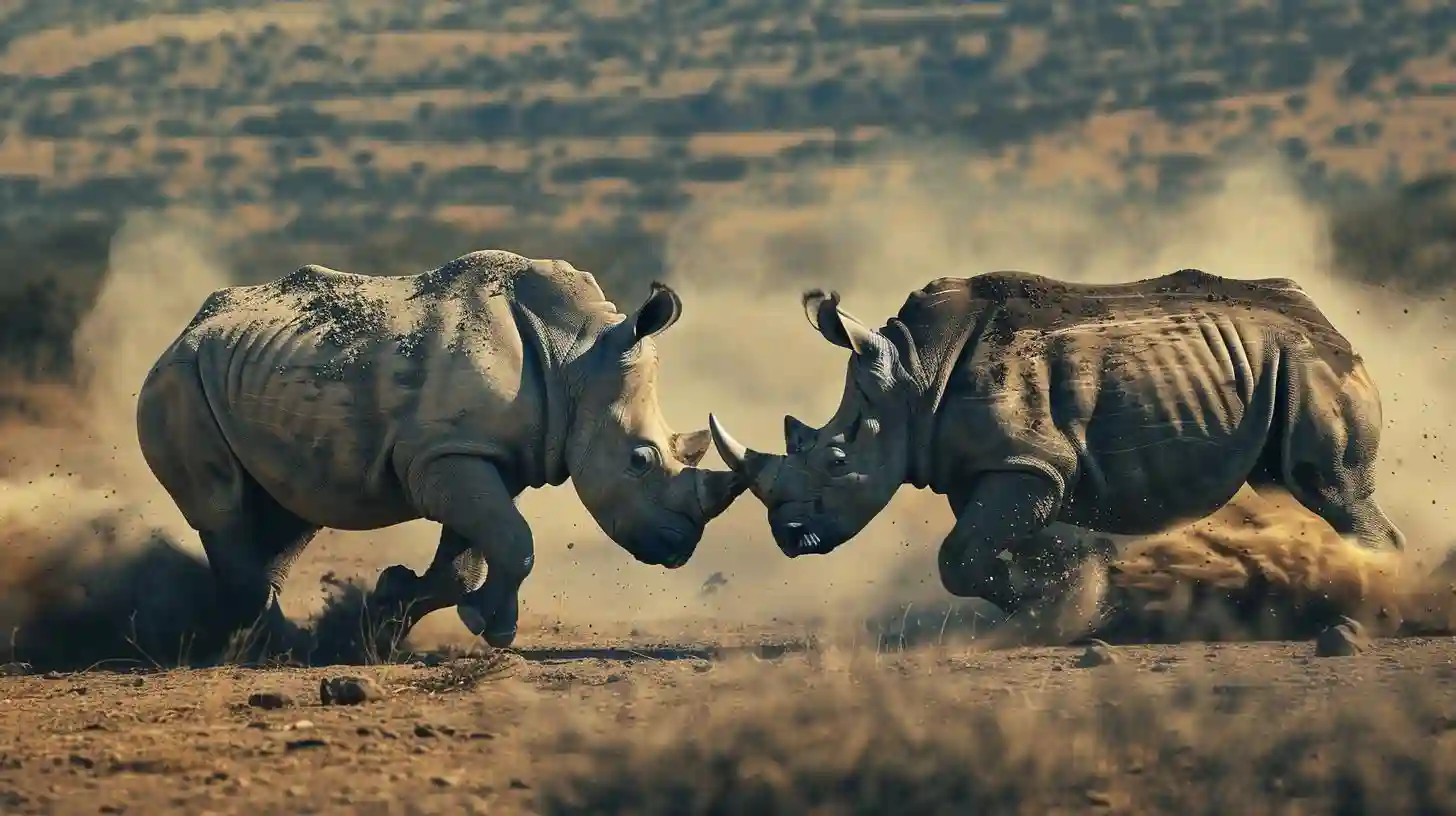
The power of the rhinoceros is a symbol of the raw, untamed energy of the natural world. The rhinoceros, often referred to as a rhino, is a member of a group of prehistoric-looking animals characterized by their large size, thick skin, and one or two horn-like structures made of keratin on their snouts. These majestic creatures are found primarily in parts of Africa and Asia. The rhinoceros embodies the essence of brute strength and resilience, and their presence in the wild represents the incredible capabilities that nature has nurtured over millions of years.
The rhinoceros, with its sheer mass and formidable appearance, commands great respect in the animal kingdom. Weighing up to several thousand pounds, a rhinoceros is one of the largest terrestrial mammals alive today. Their sturdy body, supported by strong limbs, allows them to traverse various terrains, from dense forests to vast savannahs. Despite their bulk, rhinoceroses can reach surprising speeds when charging, showcasing their powerful, muscular build. This physical power, combined with an almost impenetrable hide, effectively shields them from the claws and teeth of would-be predators.
The rhino's horn is one of its most defining features, symbolizing strength and determination. Unlike the bony antlers of deer or the ivory tusks of elephants, the rhino's horn is composed of keratin, the same protein that makes up human hair and nails. Growing continuously throughout the animal's life, the horn was historically believed to possess medicinal properties, leading to rampant poaching. Despite the misconceptions about its use, the horn undoubtedly vindicates the enduring image of the rhinoceros as a creature of immense power. Whether used to defend against predators, establish dominance, or dig for water and minerals in the ground, the horn is an essential tool that enhances the rhino's already impressive capabilities.
Resilience is another facet of the rhinoceros's power. The species has survived through diverse eras of climatic and environmental changes, enduring the pressures of evolution with remarkable adaptability. Their thick skin is not merely a shield against physical harm but also a barrier to various parasites and infections. The folds in their skin can harbor mud, which they use to cool down and protect themselves from the sun and biting insects. Such adaptability speaks volumes about their inherent strength and resourcefulness in the face of adversity. Moreover, their diet of tough vegetation like grasses, leaves, and branches translates plant biomass into immense physical energy, a testament to their efficient digestive systems.
Behaviorally, rhinoceroses exude a mix of solitary independence and, in some species, strong maternal bonds. While many species prefer to live alone, only coming together for mating or territory disputes, the bond between a mother rhino and her calf represents another dimension of their power. The mother fiercely protects her young, teaching the calf essential survival skills. This transfer of knowledge and protection ensures the continuity of their line, adding to the species' long-term resilience. Observing a mother rhino standing guard over her playful calf in the wild reveals both tenderness and an underlying strength that is both awe-inspiring and humbling.
It is crucial to recognize that the power of the rhinoceros extends beyond its physical attributes to include its ecological significance. Rhinoceroses are one of the keystone species in their habitats, playing a vital role in maintaining ecological balance. Their grazing patterns help shape the landscape, promoting biodiversity by inducing growth in certain plant species while keeping others in check. They create open areas by trampling dense vegetation, which benefits other wildlife by giving them access to new feeding grounds and allowing sunlight to reach low-lying flora. Their very presence, therefore, supports a vibrant, dynamic ecosystem that fuels the survival of numerous other organisms.
Despite their formidable power, rhinoceroses are not invincible. They face significant threats from human activities, the most pressing being poaching and habitat destruction. Poaching driven by the illegal trade of rhino horns has drastically reduced their populations, pushing some species to the brink of extinction. Habitat loss due to agricultural expansion, urban development, and deforestation further exacerbates their vulnerable status. In light of these challenges, concerted conservation efforts are essential to secure a future for these magnificent creatures. International bans on trade in rhino parts, anti-poaching patrols, and awareness campaigns are some of the strategies employed to protect them. Moreover, community-based conservation initiatives that involve local people in protecting rhinos and their habitats can create sustainable solutions beneficial to both wildlife and human populations.
The culture and mythology surrounding rhinoceroses offer another layer to understanding their power. Across various cultures, the rhino has been seen as a symbol of might, endurance, and unyielding will. In some traditional African folklore, the rhino’s horn is believed to be imbued with magical properties, capable of warding off evil spirits and providing protection. This reverence is mirrored in the statuary, art, and literature of these cultures, where the figure of the rhinoceros often takes on a larger-than-life significance. These cultural depictions underscore the deep connection between humans and rhinoceroses, highlighting how their power transcends mere physicality to touch the realms of imagination and belief.
Rhinoceroses also have much to teach us about the interface between power and vulnerability. While they are undeniably powerful, the threats they face reveal their inherent vulnerability and the delicate balance of nature. The juxtaposition of their strength against the knife's edge of survival serves as a powerful reminder of our responsibilities toward the natural world. It encourages reflection on the impacts of human activities on wildlife and the urgent need for ethical stewardship of the environment.
The mystique of the rhinoceros thus lies in its multifaceted power. Combining physical prowess, ecological significance, cultural symbolism, and a narrative of resilience and vulnerability, the rhino stands as a monument to the natural world's awe-inspiring complexity. Its story inspires admiration and prompts commitment to conservation, urging humankind to ensure that these powerful beings continue to roam the earth, symbolizing the enduring strength of nature itself.